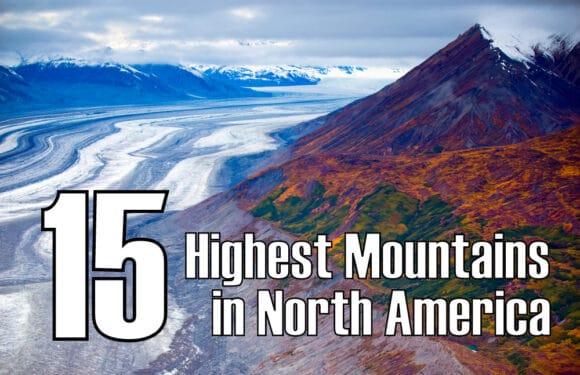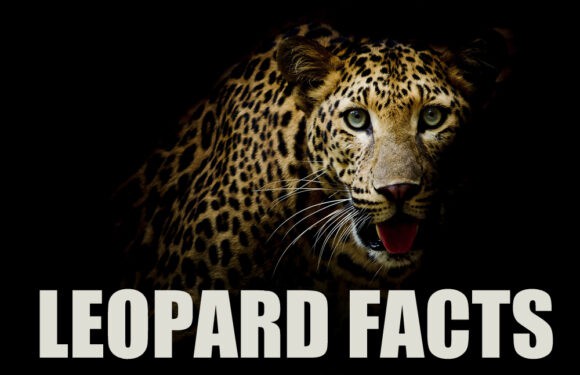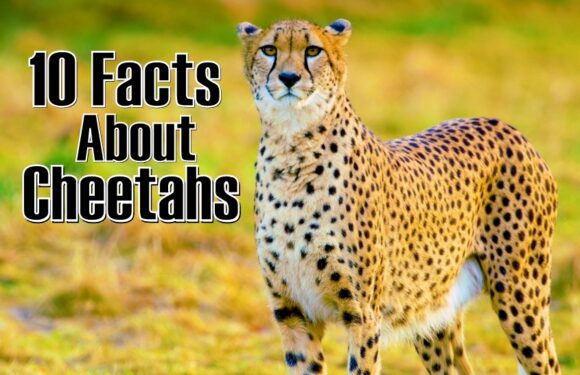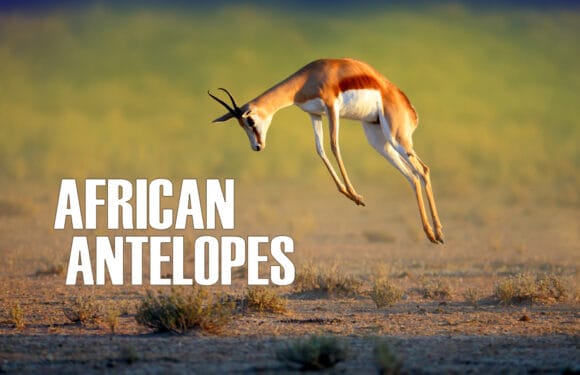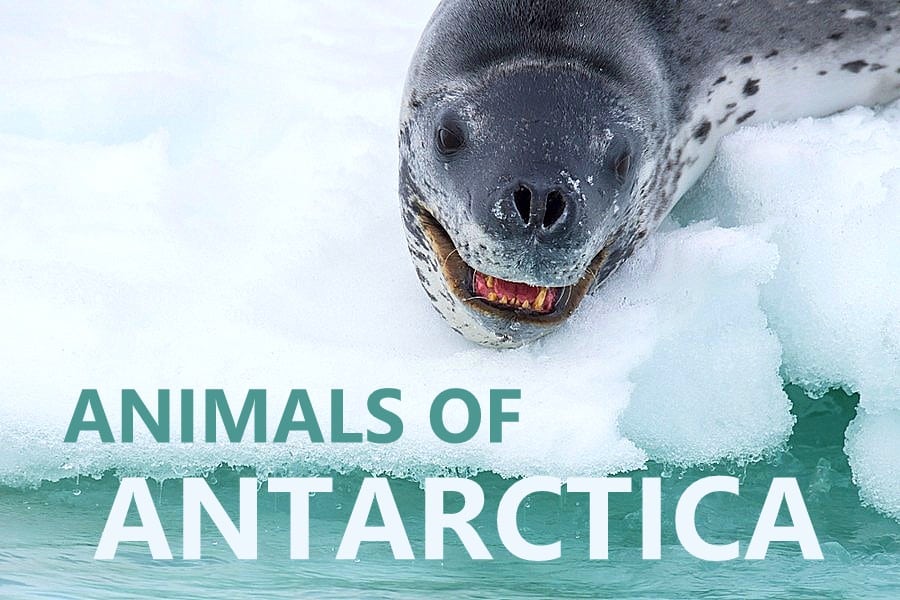
The Antarctic presents one of the harshest environments on the planet. As Earth’s southernmost continent, the land is encased in gigantic ice sheets and surrounded by the Southern Ocean. But, even here, a unique assembly of wildlife flourishes here, adapted to survive its extreme conditions.
Where is the Antarctic?
The Antarctic region encompasses the continent of Antarctica and the surrounding Southern Ocean. It is defined by the Antarctic Convergence, a biological boundary where cold polar waters sink beneath the warmer waters of the planet’s oceans. This icy kingdom lies at the Earth’s southern extremity, diametrically opposite the northern Arctic.
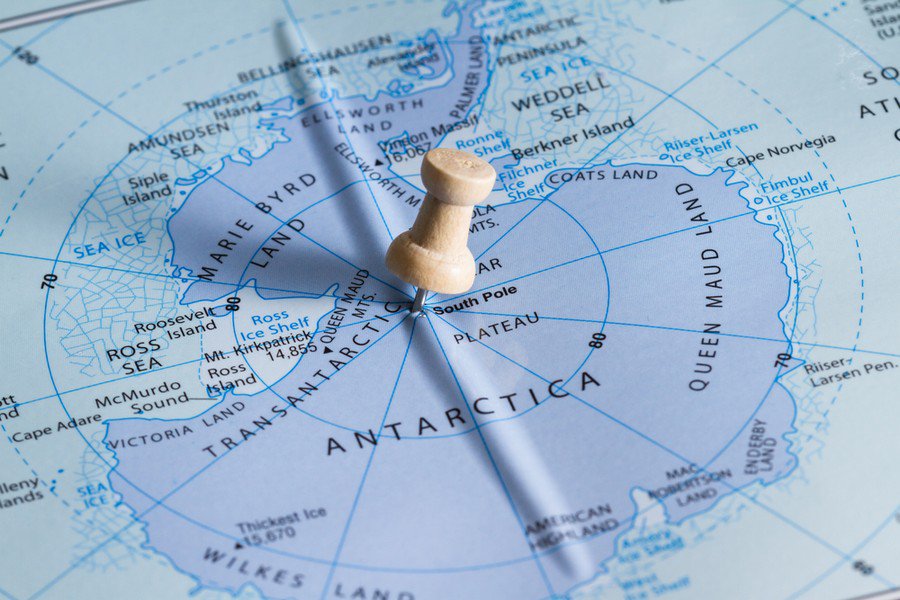
Unlike the Arctic, which is a frozen sea surrounded by continents, Antarctica is a continent surrounded by ocean. This fundamental difference shapes the distinct ecosystems and the type of life that can survive in these polar opposites.
Key Features of the Antarctic
Antarctica is often referred to as the “White Continent” due to its ice cover. It is the largest single mass of ice on Earth, covering an area of about 5.4 million square miles (14 million square kilometers) and holding approximately 90% of the world’s fresh water. This ice coverage reflects a significant amount of sunlight, giving the continent its characteristic white appearance from space and to visitors.
- Eternal Winter: The Antarctic experiences months of darkness in winter and continuous daylight in summer, a phenomenon that effects the life cycles of its indigenous species.
- Extreme Cold: Antarctica is the coldest place on Earth. Temperatures can plunge below-112°F (-80°C) in winter.
- Ice Sheets and Glaciers: Antarctica is home to the largest ice sheets in the world, covering 98% of the continent. These masses of ice influences the Earth’s climate system.
Is Antarctica a Desert?
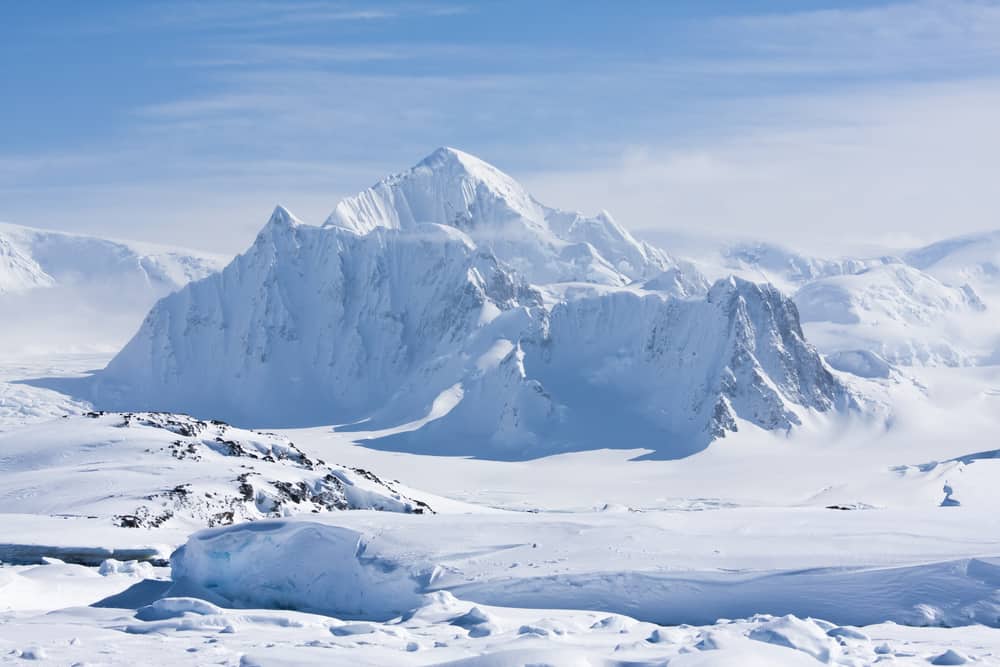
Surprisingly, Antarctica is classified as a desert. This classification might seem counterintuitive given all of the snow and ice. However, a desert is defined not by temperature, but by precipitation, and Antarctica is the driest continent on Earth. The interior of Antarctica receives less than 2 inches (50mm) of precipitation annually on average, which is less than the Sahara Desert.
However, due to the cold temperatures, the minimal rain and snowfall that the continent receives rarely melts. Instead, it accumulates over thousands of years, forming ice sheets.
The reason for the arid climate is due to the atmospheric circulation around Antarctica. Circumpolar winds, part of what’s known as the Antarctic Circumpolar Current, move around the continent from west to east, effectively isolating it from warmer, moist air masses. This tends to keep moist air from moving inland, descreasing precipitation.
Adaptations of Antarctic Animals
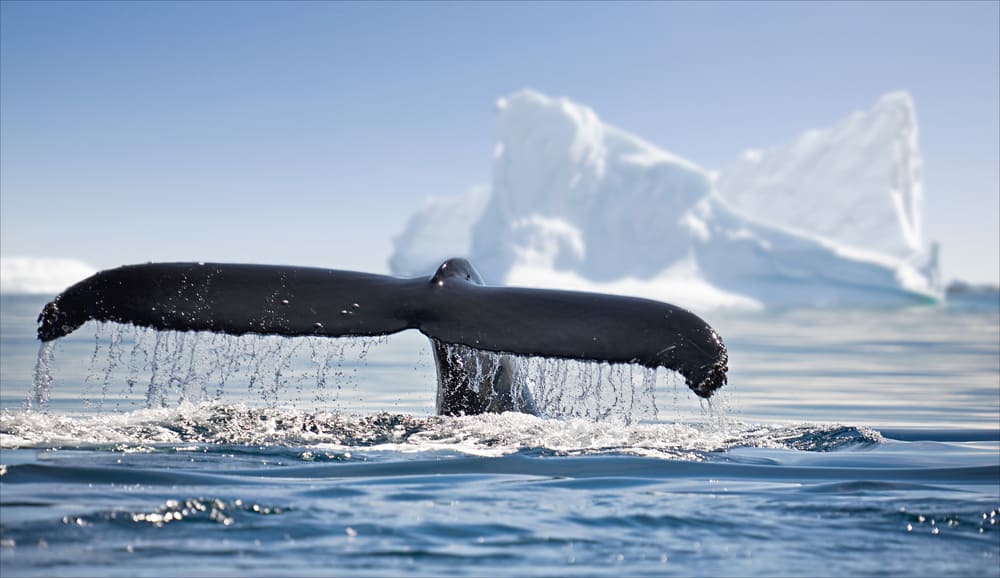
Antarctica’s wildlife is less diverse in terms of species variety compared to other continents.
This disparity stems from the continent’s harsh environmental conditions, including extreme cold, strong winds, and the presence of ice. These factors limit the range of habitats available and, consequently, the variety of life that can thrive there. Additionally, the continent offers a limited food supply. With ice covering the majority of the land year-round, food is largely confined to the ocean. As a result, most Antarctic life is found in its surrounding seas.
Survival in this continent demonstrates the resilience of polar animals. These species have remarkable adaptations to cope with the cold, scarcity of food, and the seasonal rhythms of the region. While the wildlife here is fascinating and includes species found nowhere else on Earth, the total number of species is significantly lower than on other continents.
Thermal Insulation
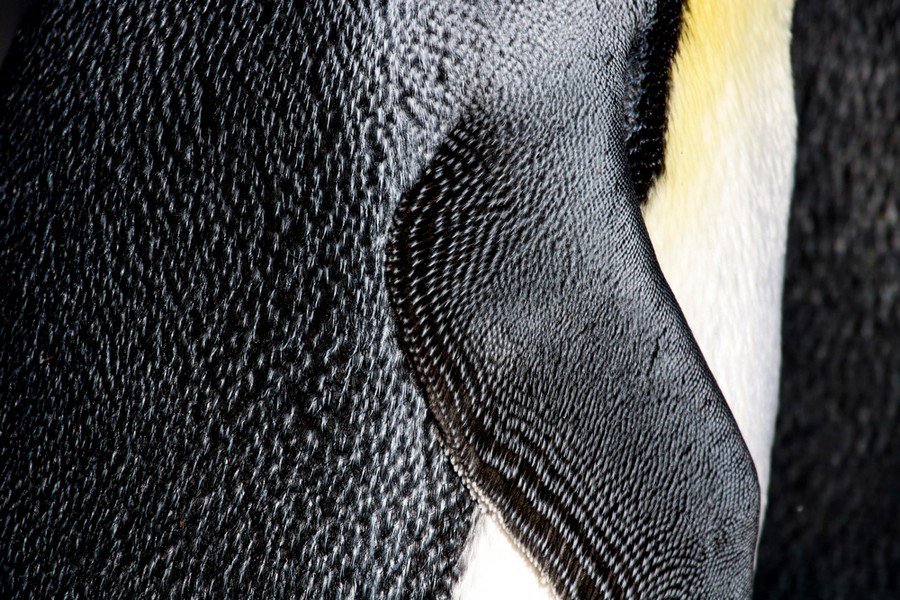
In the frigid atmostphere of Antarctica, thermal insulation is paramount for survival. Penguins have a dense layer of feathers that traps air, providing exceptional insulation against the cold. This feather layer is complemented by a thick layer of fat, offering additional warmth. Similarly, seals have evolved thick blubber that serve not only as insulation but also as an energy store during the lean winter months.
Antifreeze Proteins
A fascinating adaptation seen in Antarctic wildlife is the development of antifreeze proteins. These proteins, found in the blood and bodily fluids of some fish, prevent the formation of ice crystals, allowing these species to survive in waters that can drop to -2°C (28.4°F), below the freezing point of seawater. This adaptation is fundamental for their survival in the icy waters of the continent.
Camouflage
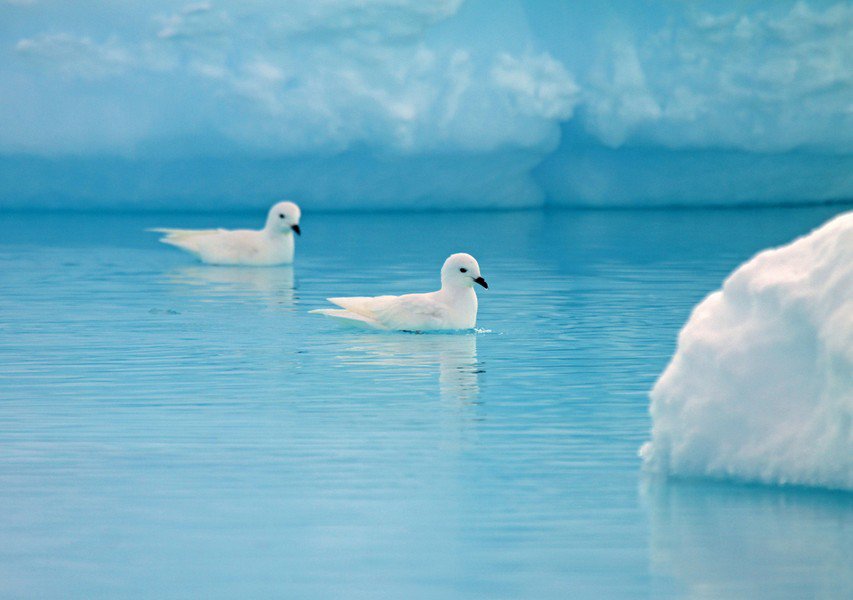
The animals of Antarctica use camouflage is part of their survival strategy. The coloration and patterns of their bodies match their surroundings to avoid predation. For instance, the snow petrel, with its pure white plumage, blends seamlessly into the snowy and icy landscapes. This adaptation increases its chances of survival in the hostile environment.
Behavioral Adaptations
Behavioral adaptations are also key to surviving the harsh conditions. King penguins, in an extravagant display of cooperation, huddle together to conserve heat during the coldest months. These gatherings can include thousands of individuals, with each penguin taking its turn on the chilly outer edge before moving back towards the center to warm up. This rotational movement ensures that each member of the group can benefit from the collective warmth.

Dietary Flexibility
The scarcity of food sources has led these polar animals to develop dietary flexibility. The Antarctic krill, a small crustacean that forms large swarms, is a main food source for a wide range of species. The wildlife located here have adapted their feeding strategies to take advantage of this abundant food source, with some species, like the baleen whales, migrating thousands of miles to feed on krill during the summer.
Animals of Antarctica
Leopard Seal

Leopard Seals, named for their spotted coats, are fearsome predators in the Antarctic ecosystem. As the third-largest seal species in Antarctica, they can reach lengths of up to 12 feet (3.65 meters) and weigh as much as 1,300 pounds (590 kg). Their slender bodies and powerful jaws equipped with large, sharp teeth make them adept hunters, preying on a variety of species including fish, squid, penguins, and even smaller seals. Leopard Seals are solitary creatures, often found patrolling the edges of ice floes in search of their next meal.
Humpback Whale
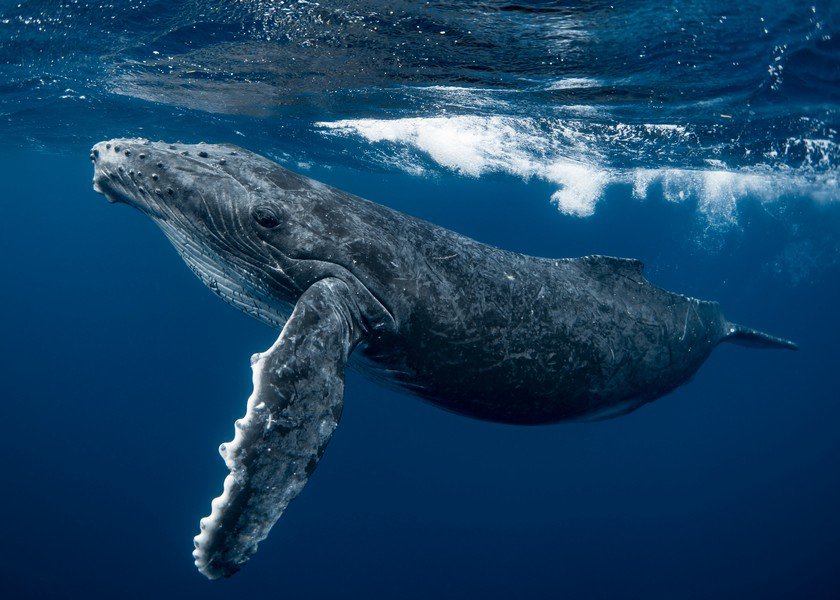
Humpback Whales can reach lengths of up to 52 feet (16 meters) and weights of about 33 tons (30 metric tons). They are known for their awesome breaching displays. These marine giants partake in one of the longest migratory journeys of any mammal on Earth, traveling from tropical breeding grounds to the polar regions to feed on dense swarms of krill and small fish. Their songs, a mysterious blend of moans, howls, and cries, are believed to play a role in communication and mating behaviors. Humpback Whales also exhibit an interesting feeding technique known as ‘bubble net feeding’, a cooperative strategy where whales encircle their prey with bubbles to herd them into a tight cluster for easy feeding.
Adélie Penguin

Adélie Penguins are a symbol of the Antarctic wilderness. Characterized by the distinctive white ring around their eyes and a black head, these medium-sized penguins thrive on the icy continent and its surrounding islands. Adélie Penguins are highly adapted to life in the cold, with a streamlined body for efficient swimming and dense, waterproof feathers for insulation against the freezing water and air. They feed primarily on krill, fish, and squid, often making long foraging trips into the ocean to find food for their chicks. The breeding season sees large colonies of Adélie Penguins gathering on ice-free areas, where they build nests from stones and fiercely defend their territory.
Antarctic Icefish

The Antarctic Icefish captures the essence of evolutionary intelligence. These fish are the only known vertebrates to lack hemoglobin, the molecule that transports oxygen in the blood. This adaptation, along with antifreeze proteins in their blood, allows them to survive in the freezing waters of the Antarctic. The Icefish’s nearly transparent blood and unique circulatory system have made them a subject of scientific study, providing insights into the limits of vertebrate life in extreme conditions.
Emperor Penguin

Emperor Penguins are the largest of the penguin species, standing at an impressive height of up to 48 inches (122 cm) and weighing as much as 88 pounds (40 kg). These birds breed in one of the world’s most inhospitable environments. Their breeding cycle begins in the depths of winter, meaning chicks are born in the slightly less harsh summer months. Emperor Penguins possess a highly efficient layer of feathers and fat, offering insulation against the bitter cold. They also huddle in groups of up to several thousand individuals to conserve heat by standing closely together.
Blue Whale

Blue Whales are the largest animals on Earth and also the largest animals to have ever existed. Measuring up to 100 feet (30 meters) in length and weighing as much as 200 tons (181 metric tons), their size is staggering. Yet, they feed almost exclusively on tiny krill, consuming up to 4 tons (3.6 metric tons) of it each day. These gentle giants are solitary or found in small groups and are known for their deep, melodious calls that can be heard for many miles underwater. Blue Whales have a mottled blue-gray appearance and an impressive blow, or spout, that can reach up to 30 feet (9 meters) in height.
Snow Petrel

Snow Petrels are one of only three bird species that breed exclusively in Antarctica. Their pure white plumage makes them a ghostly presence against the Antarctic landscape, providing camouflage against predators. These birds are capable of enduring the freezing temperatures and fierce storms of the Antarctic. They nest in rock crevices and feed on fish, squid, and krill, which they catch from the surface of the ocean. Snow Petrels have a special gland above their nasal passage that helps excrete salt, as they ingest seawater while feeding.
Chinstrap Penguin
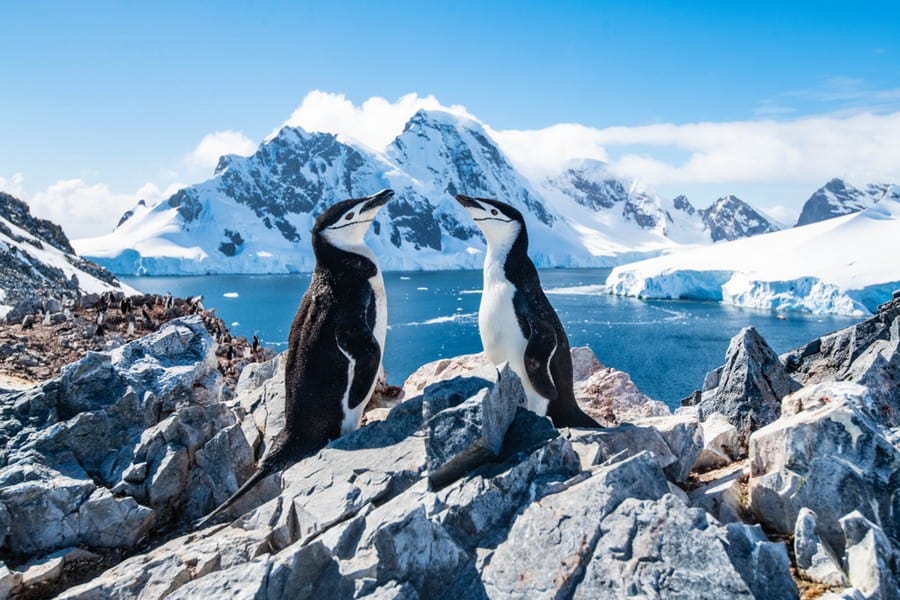
Named for the narrow black band under their beaks, Chinstrap Penguins are among the most abundant penguins in Antarctica. Millions of these birds inhabit the islands and shores of the Southern Ocean. The raucous noise of a Chinstrap Penguin colony can be overwhelming. They are often found in the thousands, congregating on ice-free slopes where they return each year to breed. As medium-sized penguins, they stand about 28 inches (71 cm) tall and weigh around 8 to 11 pounds (3.6 to 5 kg). These agile swimmers venture into the icy waters to feed on krill, small fish, and shrimp.
Orca (Killer Whale)
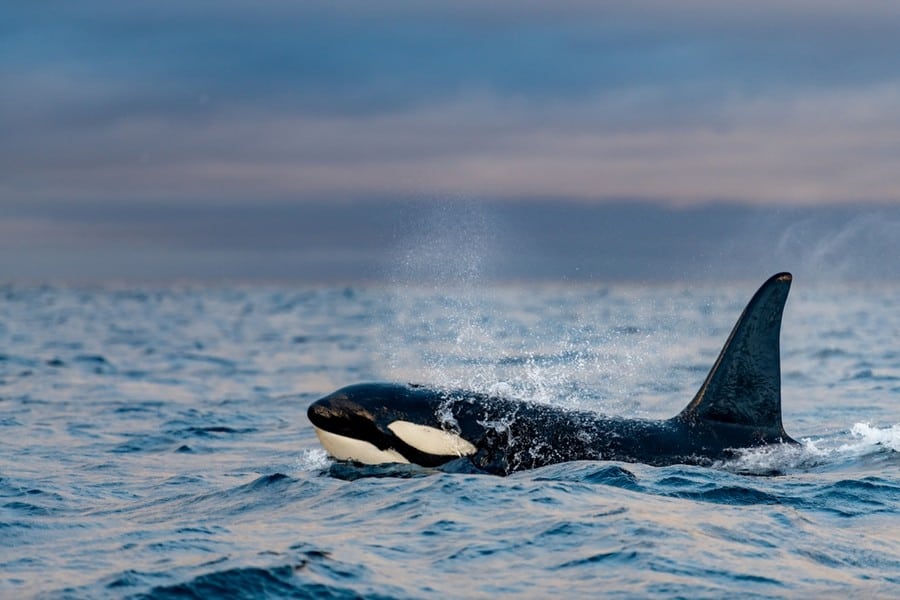
Orcas, or Killer Whales, are apex predators in the Antarctic waters. They have unmistakable black and white coloring, with a white patch behind their eyes. Some scientists believe this provides a false target to predators while others theorize that its helps other orca recognize body orientation in dark or murky waters. These marine mammals are not true whales but the largest species of the dolphin family, reaching lengths of up to 32 feet (9.8 metres) and weights of up to 6 tons (5,443 kilograms). Orcas are highly intelligent, and are one of the smartest animals in the world. They live in complex matriarchal societies with sophisticated hunting strategies and communication methods. Their impressive ability to work together to catch their prey highlights their status as one of the ocean’s most effective predators.
Antarctic Toothfish

The Antarctic Toothfish is a key species in the cold, deep waters of the Southern Ocean. The Toothfish is a slow-growing species that can live for decades. It can reach lengths of over 6 feet (1.8 meters) and weigh up to 220 pounds (100 kg). It is a top predator in its habitat, feeding on a variety of fish and invertebrates. The Toothfish serves as prey for seals and large toothed whales. Its rich, oily flesh makes it a sought-after species for human consumption. This species, along with the Patagonian Toothfish, are known commercially as Chilean Sea Bass.
Crabeater Seal

Despite their name, Crabeater Seals rarely eat crabs. Instead, they feast almost exclusively on krill. Crabeater Seals are the most abundant seal species in the world, with a population thriving in the millions. These slender seals have a streamlined body enabling them to weave through the icy waters with agility and grace. Remarkably adept at navigating the pack ice, they can often be found resting on ice floes, their light grey coat providing camouflage against predators. With an estimated length of up to 7.5 feet (2.3 meters) and a weight of around 440 pounds (200 kg), their survival hinges on the vast swarms of krill that populate the waters.
Rockhopper Penguin
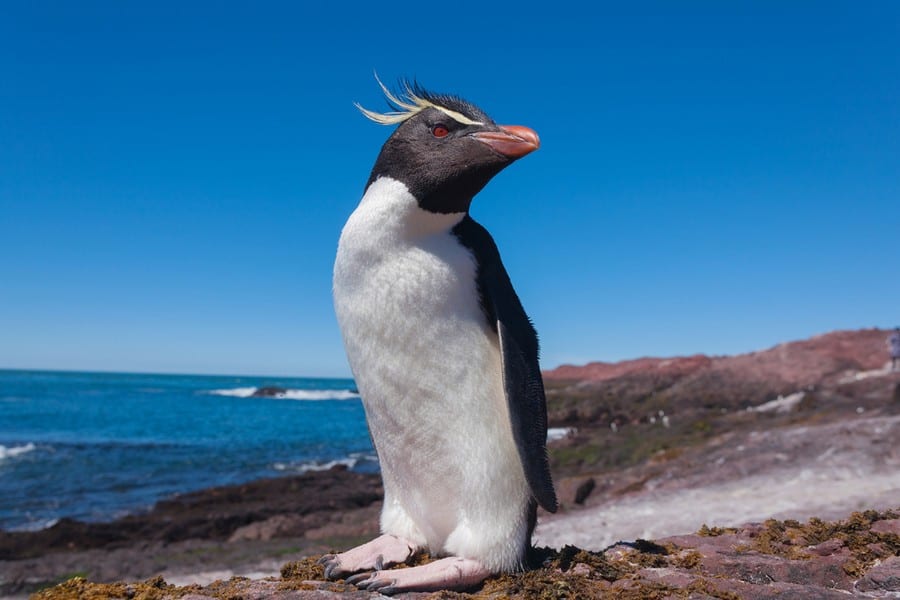
Rockhopper Penguins are easily distinguishable due to their distinctive yellow and black plumes and red eyes. Smaller than many other penguin species, these birds stand around 23 inches (58 cm) tall and weigh approximately 5 to 10 pounds (2.3 to 4.5 kg). Their name comes from their habit of hopping over rocks and obstacles rather than sliding on their bellies. They inhabit rocky, rugged coastlines where they lay their eggs and raise their chicks in nests built from stones. Their diet primarily consists of krill, squid, and small fish. Known for their feisty nature, Rockhoppers have a spirited demeanor.
Wandering Albatross

The Wandering Albatross has the largest wingspan of any bird, reaching up to 11 feet (3.5 meters). This enables it to glide effortlessly over the ocean for hours, even days, without flapping its wings. It is one of the most efficient travelers of the animal kingdom. These birds are the epitome of endurance, capable of traveling thousands of miles across the Southern Ocean in search of food, which includes squid, fish, and krill. The life of a Wandering Albatross is spent mostly at sea, coming ashore only to breed on remote islands. Their solitary nests are placed on high cliffs or slopes, where each pair raises a single chick every two years.
Elephant Seal
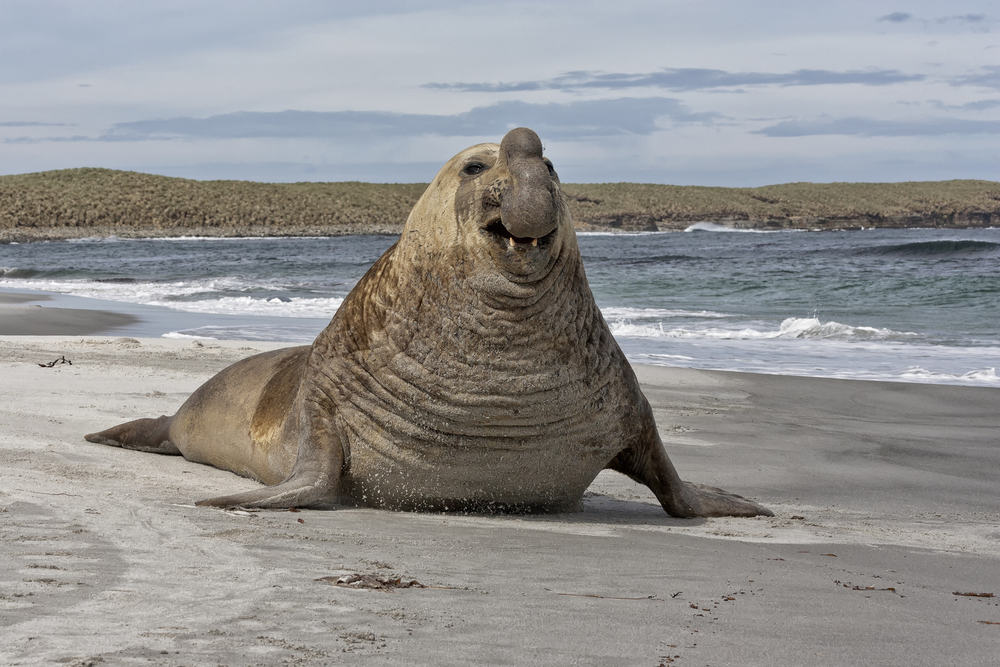
Southern Elephant Seals are named for their immense size and the large, inflatable proboscis of the males, which resembles an elephant’s trunk. Males can grow up to 20 feet (6 meters) in length and weigh over 8,800 pounds (4,000 kg), making them the largest seal species. These seals are exceptional divers, plunging to depths of over 4,921 feet (1,500 meters) and holding their breath for up to two hours as they hunt for fish and squid. Their ability to store oxygen in their muscles and blood, coupled with a reduced heart rate during dives, enables these feats. Elephant Seals spend the majority of their life in the ocean, coming ashore in large colonies only to molt, breed, and give birth on sandy beaches or pack ice.
Sperm Whale
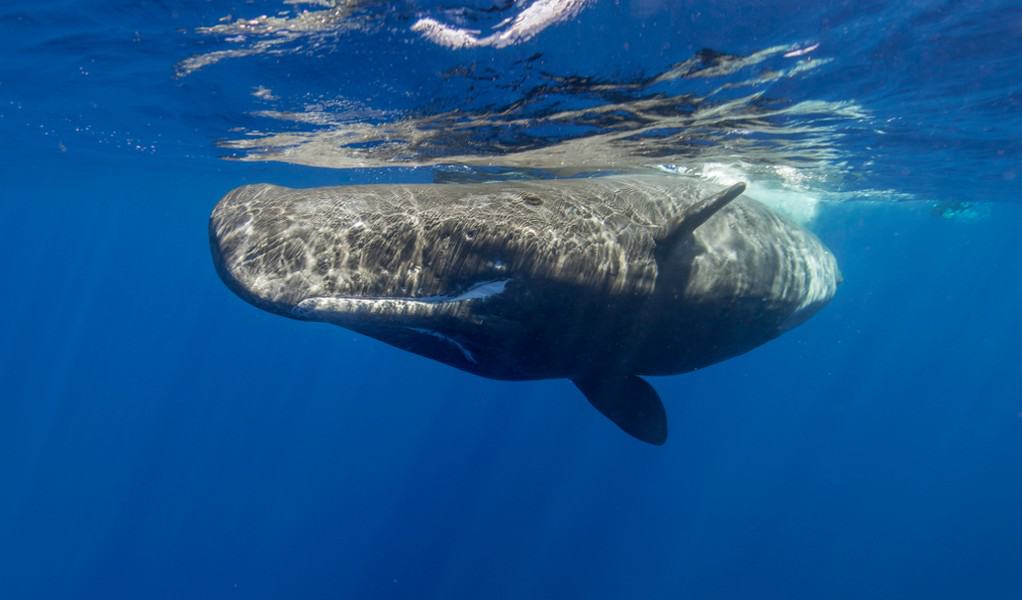
The Sperm Whale is the largest of the toothed whales. It is known for its deep diving capabilities, reaching depths of up to 3,280 feet (1,000 meters) in search of its preferred prey, the giant squid. Measuring up to 59 feet (18 meters) and weighing as much as 57 tons (51.7 metric tonnes), Sperm Whales have a distinctive block-shaped head, which houses the largest brain of any animal. They are highly social creatures, living in matrilineal family groups. Their vocalizations, known as ‘codas’, are used for communication within these complex social structures. Sperm Whales serve as a key indicator of ocean health.
Weddell Seal
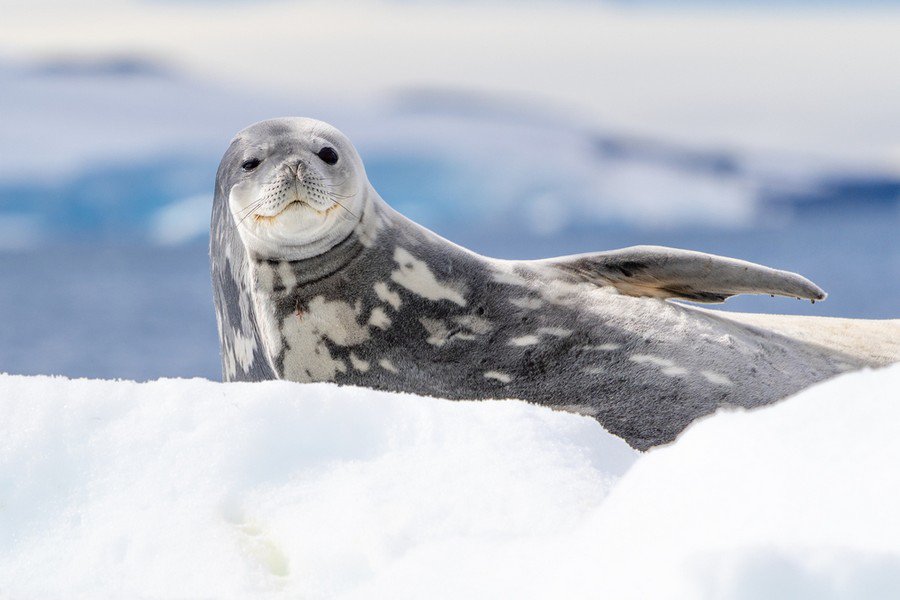
Weddell Seals have excellent diving prowess, capable of reaching depths of over 1,970 feet (600 meters) and holding their breath for up to 45 minutes. These seals have a thick layer of blubber for insulation and streamlined bodies that enable them to move gracefully through the water. They use their sharp teeth to keep breathing holes open in the ice. This allows them access to the surface in areas where the ice can be several meters thick. Weddell Seals are true residents of the Antarctic, rarely straying far from the continent’s icy shores.
Antarctic Krill
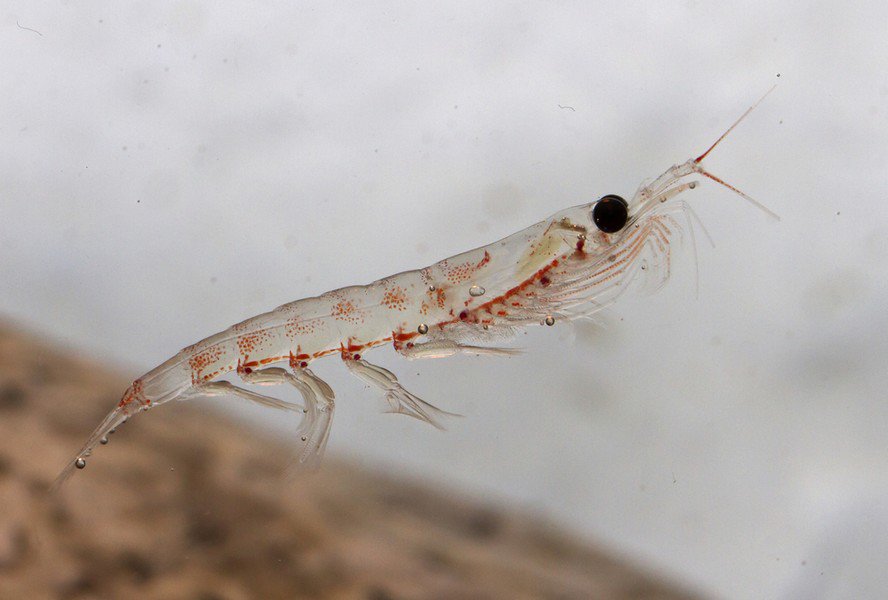
Antarctic Krill may be small, but they are mighty in terms of their ecological importance. These tiny crustaceans, measuring just 2.4 inches (6 cm) in length, form vast swarms that can stretch for kilometers in the Southern Ocean. They feed on phytoplankton, converting it into a form of energy accessible to many of Antarctica’s larger predators, including whales, seals, and penguins. Krill’s ability to survive and thrive in the cold Antarctic waters is facilitated by their antifreeze proteins, similar to those found in Antarctic fish, which prevent their bodily fluids from freezing.
The Effects of Climate Change
The Antarctic is a pristine expanse at the Earth’s southern extremity. But, it is experiencing profound shifts due to climate change.
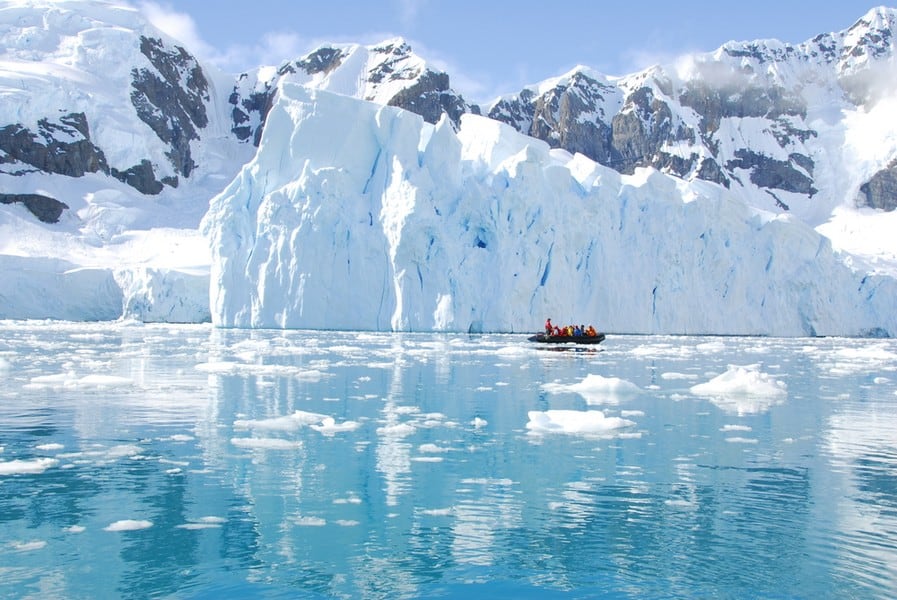
Central to the ecosystem are its vast ice sheets and glaciers. As global temperatures rise, these structures are retreating at an alarming rate. This not only results in the loss of habitat for species dependent on ice for their survival, but also reduces the reflective surface area that helps cool the planet. Therefore, the disappearance of ice accelerates global warming in a distressing feedback loop.
Furthermore, the infusion of freshwater from melting ice is altering the salinity and density of seawater. The Southern Ocean, which encircles Antarctica, is a pivotal component of the planet’s climate system. It drives ocean currents that circulate warm and cold water around the globe. However, the ocean currents are disrupted when the water becomes less salty and less dense. Such changes affect the ocean’s capacity to absorb carbon dioxide and regulate the Earth’s climate.

Moreover, shifts in water temperature and currents influence the distribution and abundance of krill, a cornerstone species in the food web. The Antarctic ecosystem is intricately linked, with krill forming the linchpin. A decline in krill populations would have cascading effects, jeopardising the survival of many species, from the smallest fish to the largest whales.
The warming climate also threatens to transform the polar landscape, with some areas becoming less icy and more hospitable to invasive species. These newcomers could outcompete native species for resources, leading to a loss of biodiversity.

List of Antarctic Animals
Here’s a list of some of the animals found in Antarctica:
Marine Mammals
- Leopard Seal
- Weddell Seal
- Crabeater Seal
- Ross Seal
- Antarctic Fur Seal
- Southern Elephant Seal
- Blue Whale
- Minke Whale
- Humpback Whale
- Orca (Killer Whale)
- Fin Whale
- Sperm Whale
- Sei Whale
- Antarctic Minke Whale
Birds
- Emperor Penguin
- Adélie Penguin
- Chinstrap Penguin
- Gentoo Penguin
- King Penguin
- Macaroni Penguin
- Southern Rockhopper Penguin
- Antarctic Petrel
- Snow Petrel
- South Polar Skua
- Brown Skua
- Black-browed Albatross
- Wandering Albatross
- Southern Giant Petrel
- Wilson’s Storm Petrel
- Antarctic Tern
Marine Life (Non-mammal)
- Antarctic Krill
- Icefish
- Antarctic Toothfish
This list includes a variety of species, from marine mammals to seabirds and fish, all adapted to the harsh conditions of the Antarctic environment.




















































